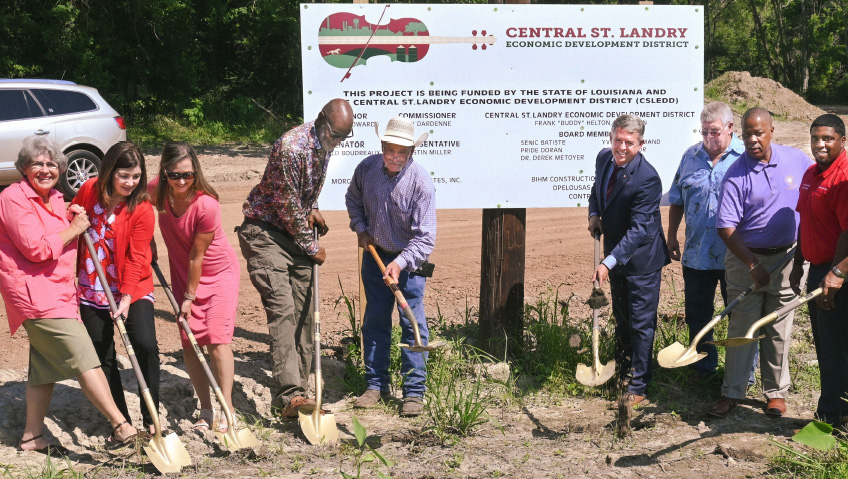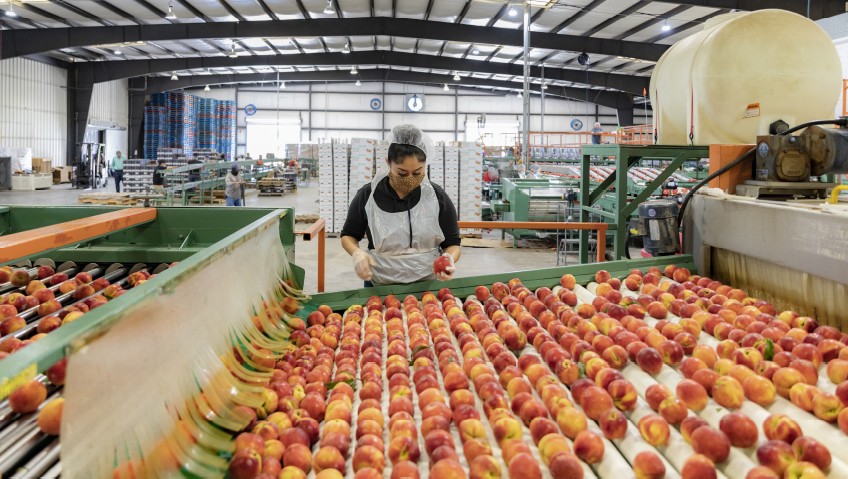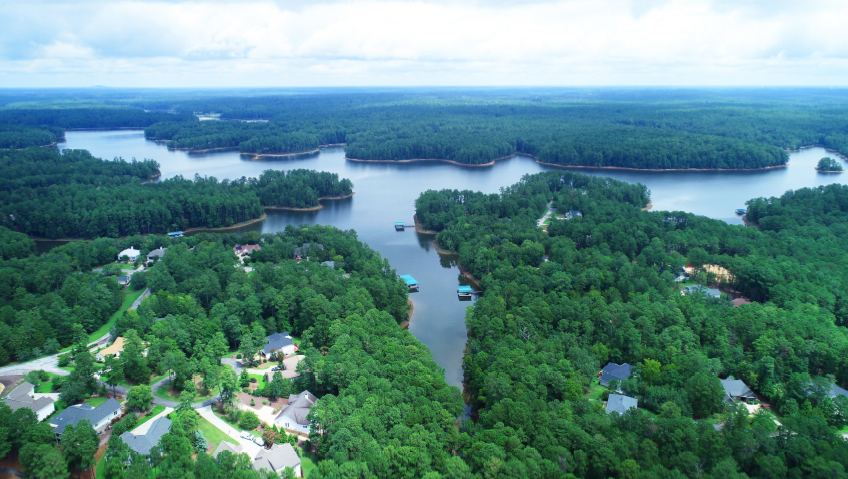Business in Focus previously profiled St. Landry Parish, Louisiana in 2017. This month, we circled back to learn about the remarkably effective economic structures the community has put into place over the last several years.
“I don’t believe there’s anything like it in the state of Louisiana,” says Bill Rodier, CEO of the St. Landry Economic Development Group. “In fact, [what we’re doing] is being looked at in many areas. We’re being called in to assist in developing some of the things we’re doing as best practices in other areas of the state.”
The Parish has created four distinct economic development boards that work together for the good of the community. “They complement each other,” Rodier says. “They’re really coming together to make significant advances.” Rather than just “shooting for a big project,” the goal is to provide permanent, systemic support. “We’re building a foundation here and it’s going to be very, very transformational over time.”
The boards are composed of 46 volunteers, “so nobody’s getting paid to do this,” Rodier says. Each of these volunteers are committed, invested members of the community. “It brings a lot of talent and professionals from around the community with specific roles and really brings their talent into the decision-making, prioritization, and expenditure of monies to help promote Economic Development. It gives us a lot of diversity and brings people to the table to help move progress forward.”
Three of the boards are quasi-governmental: the St. Landry Industrial Development District, Central St. Landry Economic Development District, and the Opelousas Downtown Development District. The fourth board, known as Vision St. Landry, is a CEO roundtable with up to seventeen local C-level executives and is classified as a non-profit 501c6.
The seventeen-member St. Landry Industrial Development District acts as an “operational engine,” Rodier explains. “All of our staff and a lot of our expenditures and operational functions operate within the St. Landry Industrial Development. Its responsibility is to ensure Economic Development across St. Landry Parish.” The board also guides and oversees the smaller boards to ensure cohesion.
The St. Landry Industrial Development District capitalizes on the assets throughout St. Landry Parish to stimulate investment, from supporting local colleges to expanding the regional airport, industrial parks, and railways within the community. The broad outlook prevents a myopic focus on the Parish core, ensuring that key business districts receive their needed share of development, but not at the cost of the rest of the Parish, which includes 12 communities spread over 940 square miles.
“I would generally say our role is to stimulate investment, whether that’s investment of businesses within the community, investment of communities to help bring resources in to build their infrastructure or of course, bringing investment in from the outside,” Rodier summarizes.
The Central St. Landry Economic Development District is responsible for investing in infrastructure capacity along the I-49 Corridor, which runs through Opelousas, the Parish’s largest city. “They are independently funded with an increment taxing mechanism,” Rodier says of the board. “They have autonomy to spend funds; they don’t need permission necessarily from Parish government or city government. They have the autonomy to collect those monies and they have a responsibility to reinvest those monies.”
The board’s infrastructure investments benefit the entire community and “make for a better business environment across one of our fastest growing and highest potential growth areas in St. Landry Parish and the backbone of St. Landry Parish,” Rodier says. “They’ve been extraordinarily successful.”
Just a few of the many recent efforts by the Central St. Landry Economic Development District include the installation of LED lighting at I-49 interchanges as well as landscaping and trash removal along the interstate on a regular basis. Prior to this, the corridor was only cleaned four times a year by the Department of Transportation. The board has also overseen the construction of a new wastewater treatment facility within their jurisdiction. The work has paid off. “We’re seeing a tidal wave of growth come into their district,” Rodier says.
The Opelousas Downtown Development District is committed to stimulating economic growth within the Parish’s biggest city. Independently funded and armed with the power to collect and invest these funds, this board has received a sizable building improvement grant, has already installed top of the line lighting throughout the downtown, and is currently considering sidewalk and road improvement projects.
In the “heart of St. Landry Parish,” improvements to Opelousas’ downtown will have a positive effect on the entire community, Rodier explains. “If you want to go someplace to look at the health and vitality of a community—it’s almost like a thermometer—go look at your downtown. If downtowns are thriving, chances are the community is well planned, they get along well, they’re progressive. If downtowns aren’t, it shows exactly the opposite; that the community is struggling, they probably don’t have good planning, they’re probably not getting along well with their leadership. It’s just a good barometer of how a community is doing. We recognize that.”
The seven members of the Opelousas Downtown Development District are “very progressive in some of the things that they’re doing,” Rodier says. The team is currently working on implementing a recently developed Master Plan, which covers a variety of projects designed to strengthen the community’s core. The efforts complement the work along the community’s other core area, the I-49 Corridor. “As with an individual, if you strengthen your core, you make your whole body stronger. So we’re focused on the greater St. Landry area, but we also want to make sure that we have a super strong core.”
The CEO roundtable, Vision St. Landry, complements all three of the other boards by providing valuable advice and guidance from industry experts. “We have this brain trust available of these folks that are in these C-level positions,” Rodier says. They “are brought to the table to say, ‘look, these are the challenges and opportunities that we have. How can we potentially better capitalize on that to try to keep all these groups focused on pulling in the same direction and having their activities somewhat autonomous in some cases, but overall complementary?’”
These business leaders step back and examine the big picture to ensure all boards are working in tandem. “[They] look at some of the larger challenges that we are facing,” Rodier says. “They’re in positions in their jobs of looking at things from a high level and really evaluating those types of challenges and bringing potential strategies and solutions together. We feel like that’s a very valuable component and a complement of the quasi-governmental boards. It’s proven over time to be a very valuable piece of our Economic Development equation.”
The symbiotic relationship between all four boards has already yielded exciting results throughout the Parish, from recent facility expansions of major food manufacturers to the recent designation ‘Equine Parish of Louisiana’ by the state legislature.
And board members are not sitting on their laurels. They are eager to take advantage of recent successes to bring even more economic advances to the area. It is now a priority to ramp up investment in equine-related projects, including the creation of new venues, a sales facility, a new equine trail, and more. Health care is another area of focus with many opportunities for growth. Already home to multiple food manufacturers—including regional favorite Tony Chachere’s Famous Creole Cuisine—St. Landry Parish is ripe for additional growth within that industry. “This area is very, very well known for its food and spice production,” Rodier shares.
Transportation, distribution, and warehousing are other areas of focus, particularly along the I-49 and Highway 190 Corridors. “We are getting more and more interest in it,” and plans are already on the table to boost infrastructure within those targeted areas in order to support the industry.
Armed with a unique and creative leadership structure, St. Landry Parish is more than ready to accomplish this next set of goals—and one can only wonder what will be next on the agenda.






